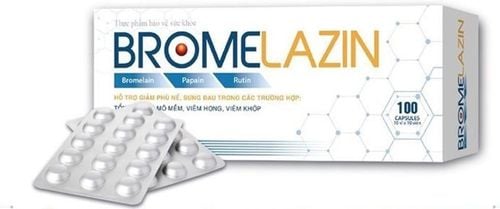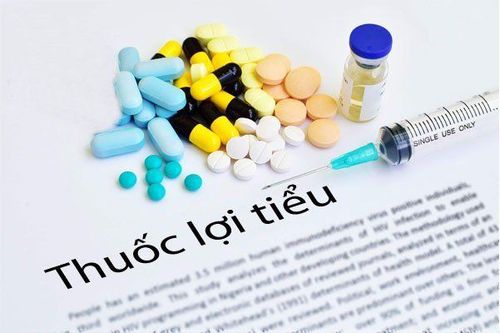This is an automatically translated article.
Nifedipine t20retard is a calcium channel blocker in the dihydropyridine subclass, mainly used as an antihypertensive and antianginal agent. Knowing the ingredients of Nifedipine or the use of Nifedipine to lower blood pressure can guide patients successfully in the care of cardiovascular patients.
1. What is Nifedipine?
The drug ingredient Nifedipine can affect the reactions on the vascular wall, through which Nifedipine t20retard is used as an antihypertensive drug and against stable angina attacks. The mechanism of action of the antihypertensive drug Nifedipine occurs during the depolarization phase of smooth muscle cells. When there is an influx of calcium ions through the pressure channels, the drug component Nifedipine inhibits the entry of calcium ions by blocking these voltage-dependent L-type calcium channels in vascular smooth muscle and cardiomyocytes. . Decreased intracellular calcium reduces peripheral vascular resistance and dilates coronary vessels, leading to a decrease in systemic blood pressure and increased myocardial oxygen delivery.2. Indications for Nifedipine t20retard
Approved indications of Nifedipine t20retard :
Chronic stable angina: Nifedipine is used to reduce the frequency of angina and increase exercise time in patients with coronary artery disease. However, reflex tachycardia may limit the effectiveness of nifedipine. However, the addition of beta-blockers can overcome this limitation. Long-acting formulations such as Nifedipine t20retard are often preferred. Hypertension - The antihypertensive drug Nifedipine can be used as monotherapy or in combination with several different antihypertensive drugs to control blood pressure readings (such as ACE inhibitors, ACE inhibitors). , thiazide diuretics). Raynaud's syndrome Pregnancy and postpartum hypertension Pulmonary edema due to hypertensive emergencies Pulmonary arterial hypertension Achalasia Inhibition of preterm labor
3. How to use the antihypertensive drug Nifedipine?
The drug ingredient Nifedipine is available in both immediate and extended release preparations. For the immediate-release formulation, the short-acting, immediate-onset formulation requires multiple daily dosing. When entering the body, the drug will cause a rapid vasodilator effect, then activate the sympathetic reflex, leading to side effects such as headache, palpitations and flushing. These side effects have led to the advent of extended-release preparations, which have been shown to have a 24-hour antihypertensive effect and with fewer side effects, allowing for single use only. during the day.
Extended release preparations are available in the form of 30, 60 and 90 mg tablets. Appropriate dosage adjustment requires a period of 7 to 14 days. The same total daily dosage should apply when switching from immediate-release to extended-release preparations. Patients can take immediate-release formulations without regard to meals. Meanwhile, some specific extended-release preparations require taking on an empty stomach.
The recommended dosage of Nifedipine t20retard in each case is as follows:
Chronic stable angina: Immediate-release 10 to 20 mg x 3 times/day; maximum dose of 180 mg per day. Extended-release form 30 or 60 mg per day; maximum dose 120 mg daily Hypertension : Extended release form 30 or 60 mg daily; maximum dose 120 mg daily hypertensive emergency of pregnancy or postpartum: immediate release 10 mg; May be repeated at 20 mg in 20 minutes
4. Possible side effects with antihypertensive drug Nifedipine
Adverse effects occur in approximately 20 to 30% of patients assigned to the antihypertensive drug nifedipine . This is mainly a consequence of the vasodilator properties of nifedipine.
The most common side effects include flushing, peripheral edema, dizziness, headache. Better tolerability with extended-release preparations than with immediate-release preparations of Nifedipine. Hypersensitivity reactions, such as pruritus, urticaria and bronchospasm, are relatively rare.
5. Contraindications when using antihypertensive drug Nifedipine
5.1. Absolute Contraindications Hypersensitivity to Nifedipine or any of its components ST-segment elevation myocardial infarction 5.2. Relative contraindications Severe aortic stenosis Unstable angina Low blood pressure Heart failure Moderate to severe liver failure
6. Be careful when using Nifedipine
In patients with unstable angina or without ST-segment elevation, the use of immediate-release nifedipine is not recommended except concomitant use of beta-blockers. The use of immediate-release nifedipine preparations (sublingual or oral) should be avoided in patients with a hypertensive emergency because this treatment is neither safe nor effective. In the case of patients with cardiogenic shock, because the heart cannot pump blood effectively, taking Nifedipine will make this condition worse by inhibiting the influx of calcium ions into the heart cells. In cases of severe valvular or coarctation of the aorta, nifedipine may cause systemic hypotension and ventricular dysfunction. In unstable angina, nifedipine increases myocardial contractility reflex, increases myocardial oxygen demand and aggravates ischemia. Nifedipine may exacerbate hypoperfusion to vital organs in patients with severe hypotension. Furthermore, patients with hepatic impairment may not be able to metabolize Nifedipine, resulting in a longer half-life, increasing the risk of toxicity and adverse events. In summary, the use of antihypertensive drug Nifedipine is as safe as the blood pressure drug amlodipine 5mg because of the same drug class, patients do not need to monitor blood tests regularly. However, because Nifedipine is a blood pressure-lowering medication, both physicians and patients should regularly measure blood pressure at home to achieve target levels.
Please dial HOTLINE for more information or register for an appointment HERE. Download MyVinmec app to make appointments faster and to manage your bookings easily.













